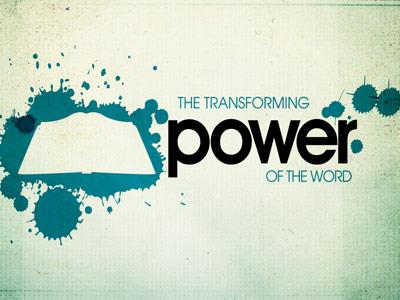-
Is The Bible Reliable And Relevant Series
Contributed by Tim White on Nov 28, 2017 (message contributor)
Summary: Part 1, a collection of well known information about the relevance of the Bible. Part 2, unique thoughts on the relevance of the Bible for today.
Is the Bible Reliable and Relevant?
(The first half of this sermon has been gleaned from many sources of information. Particularly helpful was the blog of Robert Lundburg in the footnotes, but some of it has been collected from years of reading and study independently through many sources. The second half of this sermon on Relevance is uniquely collected as best I can remember and was organized as part of this sermon from previous sermons. No plagiarism was intended in the second part, but appreciation for those who collected and organized the first part is expressed)
Hebrews 4:12 “For the word of God is living and active, sharper than any two-edged sword, piercing to the division of soul and of spirit, of joints and of marrow, and discerning the thoughts and intentions of the heart.”
The Bible itself claims to be living and active, effective, reliable, relevant and discerning. Many do not believe this is enough, for every prophet, religion and religious tome speaks to validate itself.
Today I want to look at this. Is the Bible reliable from world standards, stepping back and taking an objective look at the book?
Second, if it is reliable, is it relevant for today?
Many have done some great academic work in this area, so I am not claiming that the information I bring to day is original.
It was taken from a lot of resources and you will find this information almost everywhere, on the internet, in the library, on television and radio.
Several writers have begun this study as unbelievers and have been persuaded to Christianity by the data and information they found.
Of those are C. S. Lewis, Josh McDowell, Lee Strobel and Alistair McGrath are a few noted authors and educators who have turned to Christ.
Their invaluable work in this area has bless all of us as they share their journey and research from agnosticism or atheism into Christianity.
The Bible and Bible proponents claim that it is “a reliable collection of historical documents written by eyewitnesses that were written during the lifetime of other eyewitnesses. They record for us supernatural events that are direct fulfillment to specific prophecies.The writers claiming that the writings are divine rather than human in origin.” 1
There actually is a test that is applied to historical documents. So we do not have to rely on “blind faith” to begin determining the reliability of scriptures.
I know the criticism of the Bible. We do not have the original documents. That, however, is an unfounded complaint when it comes to historical documents.
In 1952, a professor of military history, Chauncey Sanders, set down three tests which can be used for any historical writing. He named these tests the bibliographic test, the internal test, and the external test. Since the Bible is a collection of historical documents, we can examine the Bible with these tests in the same way we would examine other ancient documents.
The Bibliographic Test -- How Well Were the Original Documents Transmitted to Us Today?
Whenever a document is written, there is always only one original. This is the document from which copies are made. Sometimes, many copies will be made. Other times, only a few will be made.
What we want to find out is, if we had to construct the original document from the copies, how accurate would it be? Clearly, 100% accuracy would be a perfect copy.
The Old Testament
There are very few copies of the original Old Testament writings. This is because copies were lost, ceremonially buried when worn out, or destroyed if imperfections were discovered.
Before 1947, the earliest Hebrew manuscript available was the Masoretic text. But in 1947, approximately 1100 scrolls known as the Dead Sea Scrolls were discovered. The amazing thing about these scrolls is that they are dated between 200 BC, and 68 AD, and contained a complete copy of the Prophet Isaiah.[1]
There are very few variations between these two manuscripts. No variations affect the meaning of the documents in any way.
The New Testament
Archaeologists have found copies of quite a few ancient manuscripts, written by different authors.
Listen to some of the documents and the number of copies:
Homer’s Illiad and Odessi are considered 95% accurate from the originals, and there are about 643 copies, but no original. Scholars universally accept the copies of Homer's writings as being accurate.
Caesar’s The Gallic Wars, there are only 10 copies, and the tests indicate there are not enough older copies to reconstruct and percentage of the original.
The copies now available of New Testament texts number over 14,000 copies and the tests indicate what we have today is 99.5% accurate with no variant affecting doctrine or theology.
It is undeniable, then, that the New Testament is by far the most accurately reconstructed ancient document. It passes the bibliographic test with no problems whatsoever.

 Sermon Central
Sermon Central



